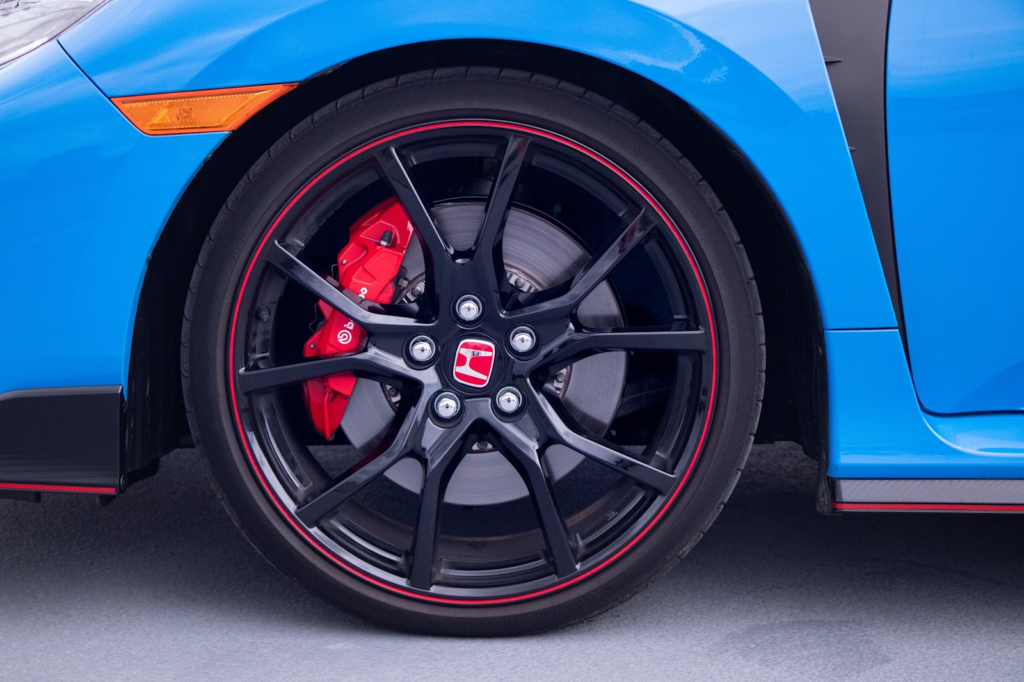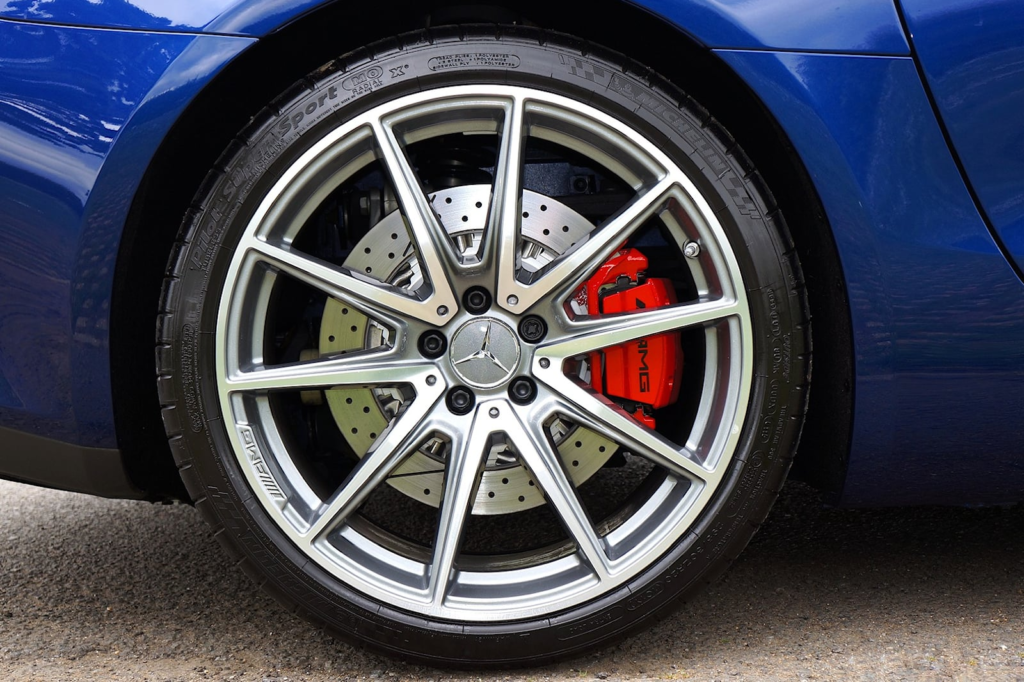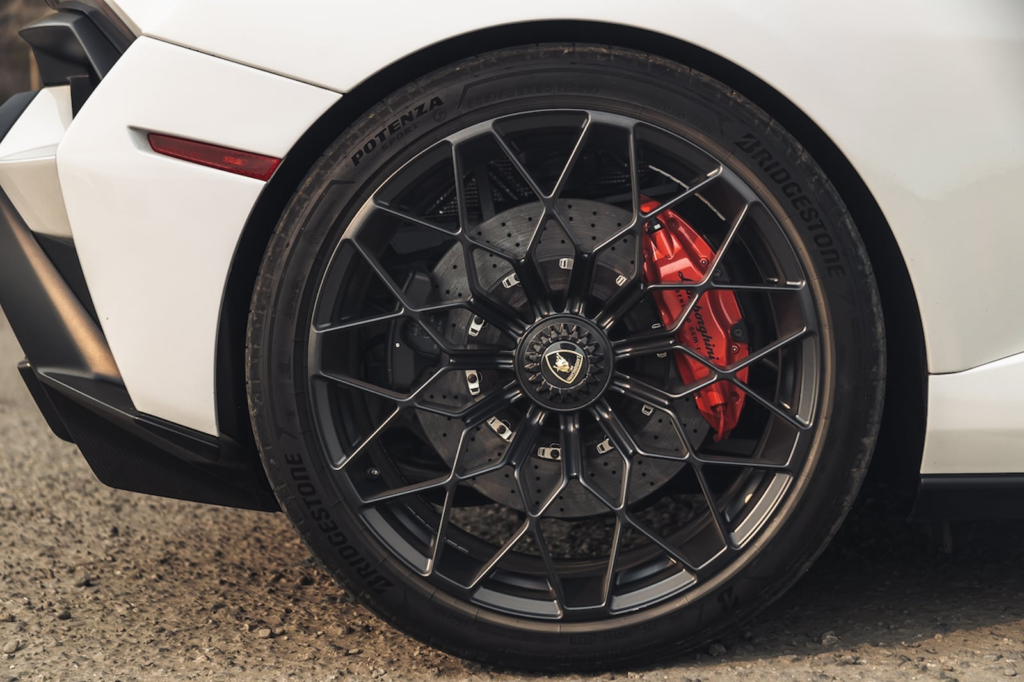Tires are where the rubber literally meets the road. While there is no most important part of a car, the contact patch is one of the critical points for safety and performance. Tires are where the grip is created, and the suspension helps ensure the grip is consistent and controls how it’s handled. Grip and handling are often confused with each other or lumped together for simplicity’s sake. It’s an important distinction, though, and will be important here.
Grip is what stops the car from sliding off the road and becoming part of the scenery, while handling is made up of a long list of ingredients that come together to dictate how the car behaves and uses that grip.
To confuse things further, tires supply grip, but they’re also an ingredient to handling, and a lot of that has to do with the height of the tire walls, hence the existence of low-profile tires. We’ll start by asking, “what are low-profile tires?”
What Are Low Profile Tires?
The tire profile refers to the height of the tire’s sidewall or, to put it another way, how big the side of a tire is. When that tire wall is narrow, it’s known as a low-profile tire, or low-pro tire, in some circles. They’re also described as thin tires and rubber band tires when they get extreme.
When looking at the numbers on the side of your tire, low-profile rubber doesn’t have a specific number that denotes it. That’s because the tire size indicators for the profile are relative to the tire’s width. For example, a 205/50 R17 tire is not particularly low profile. In that example, the 205 represents the tire’s width in millimeters, while the 50 represents its profile as a percentage of the width – in this case, 102.5 mm, or about four inches. That’s the ‘profile’ of the tire.
The thinnest tires we’ve seen from the factory and on the road are the 245/30R20 on the FK8-generation Honda Civic Type R. The tire wall is just 2.89 inches thick. We’ve seen thinner tires on show cars, but at some point, they are just for show.
In short, Low-profile tires are tires with a shorter sidewall height in proportion to the width of the tire. This design gives the tire a more aggressive and sporty look, as well as improved handling and braking performance. Low-profile tires are typically found on sports cars and high-performance vehicles, but they can also be used on other types of vehicles. However, they may not be suitable for all types of driving conditions, such as in snowy or off-road terrain, and they may also be more prone to damage from road hazards.

Benefits Of Low-Profile Tires
Typically the reserve of sports cars, low-profile tires have one massive benefit with loads of resultant ones. Shorter side walls mean there’s less rubber that can flex. That means the sidewall is stiffer. The most noticeable benefit of that is improved grip when cornering. Typically, the tires on a car flex and bend under duress, letting the tire roll onto the sidewall itself, where it provides less grip. By stiffening this, not only do you keep the right pieces of the tire (the tread) in contact with the road, but you also rid yourself of the rubbery steering sensation caused by tire flex as the rubber compound squeezes and shifts itself under the weight of a car mid-corner. Steering response is thus improved, as is steering feel, letting you detect when the tires are on the limits of their grip.
The basic advantage can be summed up as a performance benefit – more grip and better feel when cornering, which ultimately leads to better lap times. They’re not just better on track, but on a well-maintained road, they can provide more grip and more fun.

Cons Of Low-Profile Tires
Considering their popularity, there are a lot of downsides to low-profile tires. First of all, they’re stiff and more uncomfortable. That’s because with less sidewall flexing, the tire can’t absorb bumps in the road, sending them straight through the wheel and into the suspension. This can lead to a brittle ride, and, worse, damaged wheels if you hit even smaller potholes. Second, they’re expensive. This isn’t so much to do with them being low-profile as it is that low-pro tires are usually for larger wheels and are typically performance tires, which means the compounds used are more complex and more expensive as a result.
Poorer acceleration is the downside that most people don’t expect, and while this isn’t always the case, on a like-for-like basis, a low-profile tire with the same compound as a higher one, both running the same pressures, will likely accelerate slightly slower. That’s because off-the-line, the low-profile tire’s lack of flex in the sidewall means it can’t absorb rotational force, and instead, it breaks loose into a burn-out. High-profile tires are used on drag cars for this reason, and if you watch slow-mo launch footage of cars on drag radials, you’ll even see the entire tire twisting as the car puts down its power.
Should I Put Low- Or High-Profile Tires On My Car?
When deciding on what you should put on your car, there’s lots to consider. First and foremost is the purpose of the car and what the manufacturer shipped it with from the factory. For example, taking a Ford F-150 and slapping on low-profile tires with big rims might look good to you (that’s subjective), but the truck was never meant for low-profile rubber, and its suspension certainly wasn’t developed with low-pro tires in mind. You’re in for poor ride quality, jittery handling, and a whole load of hurt the moment you hit a rock anywhere.
In this instance, higher-profile rubber is a part of the suspension system, absorbing bumps, helping cater to heavy loading, and enabling you to off-road without damaging a wheel.

If your car came with low-profile tires from the factory, you might want to go lower or higher, depending on your needs. If your sports car only sees street use and the roads aren’t that well maintained, dropping an inch on your wheel size and going up a little on the profile – to ensure the outer diameter of the wheel doesn’t change vastly – will make the ride vastly better. But if you live on the track, going for a lower-profile rubber may pay off more.
Ultimately, it’s your choice what you do, and these days, if you have enough money, someone will help you make a poor decision. But, using the manufacturer’s factory settings as guidelines, and a little common sense for your setting/application, variation to one side of the other can have a big improvement on how you experience your car.
Low Profile Tires For Trucks
There’s little practical reason for low-profile tires for trucks to exist. In fact, if you use your truck as a truck, low-profile tires are a terrible idea. There’s a reason that trucks come with tires that have substantial walls, and that’s because it’s a truck that’s designed to do truck things. Having more flexible sidewalls on a truck’s tires helps with comfort, as trucks don’t typically have independent suspension on the back and are built with unpaved roads in mind. Taller sidewalls also help with heavy payloads and towing as they are forgiving on suspension and the wheel itself.
If your truck is an everyday driver that never does truck things and you’re looking for big wheels and thin tires, nobody will stop you, but everyone will judge you. There is an argument for putting them on performance street trucks, but performance street trucks are a contradiction in terms. They’re heavy and unbalanced with suspension geometry designed for doing truck things, not street racing. Putting low-profile tires on a truck is like putting running shoes on a 350-pound person. It is not kidding anyone.
